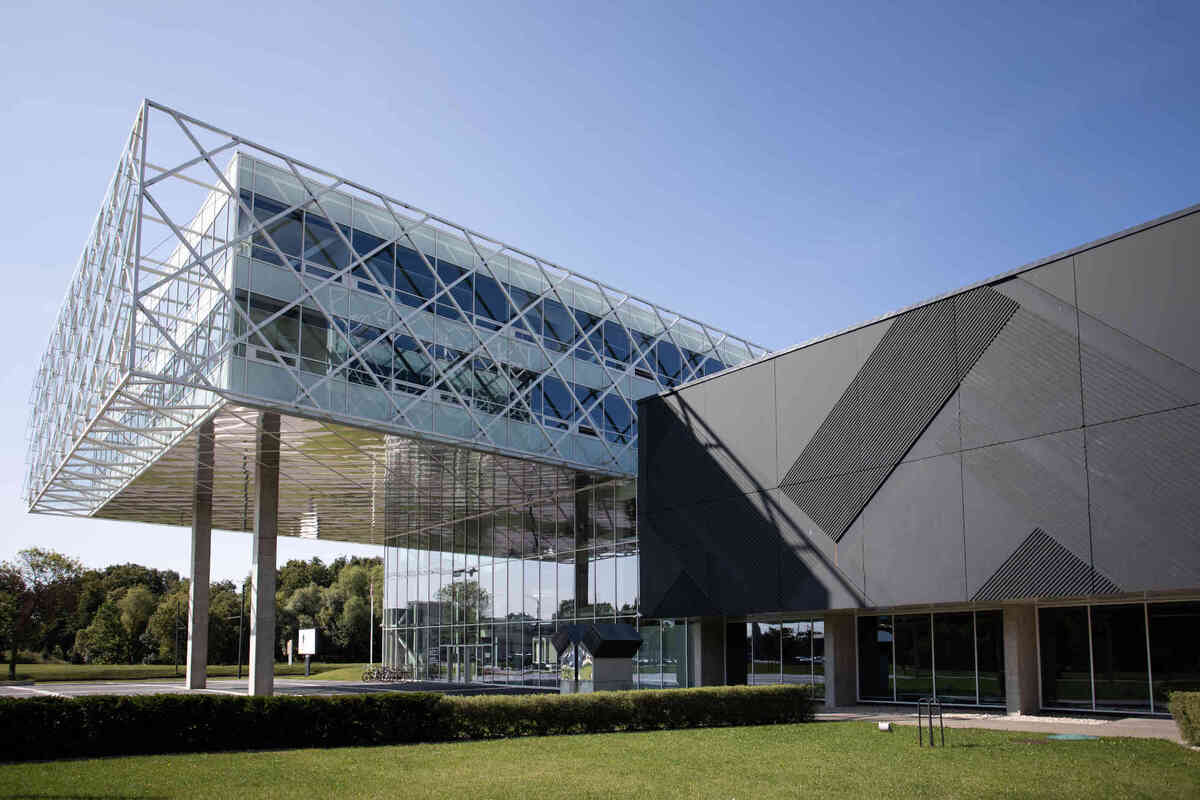Future architecture will provide a level of luxury and comfort that is only possible thanks to advancements in contemporary technology, especially in the field known as the “Internet of Things,” or IoT. This will apply to both residential and commercial structures. These cutting-edge “Smart” buildings will be equipped with an array of internet-connected Edge devices and sensors that can not only customize the surroundings to suit individual preferences and tastes, but also analyze and forecast usage patterns to conserve finite resources like water and energy, as well as enhance the general resilience and safety of the building’s occupants.
The European Energy Efficiency Directive for Buildings mandates that member states create long-term plans to integrate energy systems in safer, more sustainable, and low-carbon buildings by 2050. Using a shared, optional regime, this method determines and evaluates a building’s smart readiness as well as its capacity to modify its operations in response to network and occupant needs. That’s why the Smart Readiness Indicator (SRI) was developed.
The presence and operation of various smart services are taken into consideration when evaluating a building’s technology readiness, with the goals being energy flexibility, user-friendliness, and efficiency. Applying SRIs is a challenging process because the criteria that must be taken into account are not regularly controlled. However, by uniting the many elements and connecting them to the application of state-of-the-art technology, the Smart Readiness Indicator (SRI) can act as a catalyst for realizing the promise of building restoration.
The purpose of the Smart Readiness Indicator (SRI) is to increase user, owner, tenant, and smart service provider understanding of the advantages of smart building technology and services by making them more concrete. It aims to encourage innovative ideas in the construction sector and the integration of cutting-edge smart technologies into structures.
Table of Contents
What is the Smart Readiness Indicator, or SRI?
The Smart Readiness Indicator (SRI) will increase public awareness of the advantages of smart building technologies, including building automation and electronic building system monitoring for HVAC, lighting, ventilation, and hot water. By encouraging the integration of cutting-edge smart technologies into buildings, the SRI framework is used to promote technical innovation in the construction industry.
Suggested article to read: Construction HVAC Systems; Ultimate Guide for 2025
A smart building is one that adjusts its operations to meet the demands of the grid (smart meters, demand response), the building itself (internet-accessible building management system), and its users (demand response for HVAC and lighting systems, for example). Electronic systems and information and communication technologies are used to accomplish this. The creation of a voluntary European standard for grading buildings based on their degree of smart ready was mandated by the EPBD.
The Smart Readiness Indicator (SRI) attempts to provide building owners, tenants, and users with a more tangible comprehension of the value addition that smart buildings provide. The European Commission mandated a collaboration (VITO, Waide Strategic Efficiency Europe) to create and evaluate the voluntary project. The suggested SRI method employs a qualitative labeling system.
The examination of a building’s smart ready services’ functionality forms the basis of the Smart Readiness Indicator (SRI) assessment process. Any service can have different “Smartness” or “functionality levels” assigned to it. The nine domains that make up the smart ready services are as follows:
- Heating and Cooling
- The home’s hot water
- Controlled airflow
- Brightness
- Flexible building envelope
- Energy for charging electric cars
- Monitoring and overseeing
There are two to five distinct functionality levels for each of the smart ready services. “Smarter” services are those that are provided at a higher functionality level and typically benefit building users or the grid more than those that are provided at a lower functionality level.
Suggested article to read: Building Energy Optimization; Comprehensive Guide 2025
The concept of “Smartness” describes a building’s capacity to perceive, comprehend, convey, and react to changes in its technological systems’ functioning, the external environment (including energy grids), and the needs of its occupants.
Buildings (or building units) are rated by the Smart Readiness Indicator (SRI) according to how well they can perform three primary duties.
- Optimize energy efficiency in buildings and the performance of the system that is currently in use.
- Adapt their operation to the needs of the occupant.
- Adapt to signals from the grid (like energy flexibility).

Increasing the Intelligence of Buildings
In the future, smart buildings—both newly built and renovated—will be essential to our energy system. The Internet of Things and smart energy management systems, among other contemporary ICT-based technologies, have made it possible to effectively control and monitor a building’s energy efficiency and flexibility.
Smart applications guarantee that all client needs are met, energy consumption and carbon emissions are minimized, and you save money on your energy bill. Among the benefits of smart buildings are smart appliances, solar panels, energy systems, heat pumps, and other household products. Increasing the tangible added value of smart building features for building occupants, owners, tenants, and smart service providers is the aim of the Smart Readiness Indicator (SRI).
More specifically, it provides information on the degree to which buildings equipped with technology can interact with both the energy system and its occupants. In a similar spirit, it highlights how ICT technology may enhance building performance and facilitate more efficient operation. By providing all significant stakeholders with a common language, the SRI can promote the adoption of technical innovation and smart ready technologies through the creation of a credible and integrated instrument.
Suggested article to read: Building Energy Monitoring Systems; Guide to 2025
Whole-Building Energy Evaluation
The IDA ICE program was utilized to compute the energy performance of the building unit under investigation. Implementing whole-building energy assessments is made possible by IDA ICE. IDA ICE is a simulation application that supports IFC BIM models and is used for the multi-zonal and dynamic analysis of energy use and interior climatic phenomena.
Specifically, a detailed simulation of the building’s technical systems made it possible to develop parametric scenarios pertaining to the automation and control system upgrading of the structure under investigation. The use of thermostatic heads was looked into for this study. Information on a building’s energy use under various scenarios was provided by the simulation.
The amount of thermal energy used during the heating season was measured using dynamic simulations in two different scenarios: the installation of thermostatic valves in the radiators and the business-as-usual (BAU) scenario. Regarding the calculation assumptions, it was assumed that there was 18 m3/(hm2) of supply air, 2 m2 of area per student, and 5 W/m2 of heat from lightning.
When the outside temperature dropped below 10 °C, it was assumed that the heating would begin, and the exterior temperature sensor would control the heat carrier’s temperature. It was taken into consideration for the building’s operating schedule because kids were in the classes Monday through Friday from 9 a.m. to 5 p.m.
The Estimate of Costs for the Smart Readiness Indicator
A Smart Readiness Indicator (SRI) assessment starts with an examination of “Smart-ready services” in the nine technological domains of electricity, electric vehicle charging, monitoring, control, dynamic building envelope, lighting, ventilation, heating, cooling, and ventilation.
The seven intended impacts of smart buildings—energy efficiency, maintenance and fault prediction, comfort, convenience, health, well-being, and accessibility—as well as information to occupants, energy flexibility, and storage—are used to evaluate the effectiveness of each service.
The building’s proximity to ideal smart readiness is indicated by the Smart Readiness Indicator (SRI) score and overall SRI class, which are derived from the results of the smart-ready examination. Furthermore, discrete scores are computed for every one of the three principal components of building intelligence.
An Extract of the Evaluation Procedure
The need to exploit smart energy-efficient technology in the building industry throughout Europe and to expedite building rehabilitation expenditures led to the introduction of the SRI. According to the European Commission (2022), the Sustainability Rating Index Smart Readiness Indicator (SRI) evaluates a building’s capacity to function in a way that maximizes both its overall performance and energy efficiency, as well as its energy flexibility—the ability to adjust to signals from the grid and meet occupant needs. Thus, rather than focusing on the building envelope, it primarily addresses the electromechanical infrastructure of buildings.
The ability of the buildings under examination to provide “Smart-ready” services—which are listed in a “Smart-ready service catalogue” and cover nine (9) technical domains:
- Heating,
- Domestic hot water (DHW),
- Cooling,
- Ventilation,
- Lighting,
- Dynamic building envelope,
- Electricity,
- Electric vehicle charging, and
- Monitoring and control—determines the final SRI rating.
Heat emission control, control over DHW storage charging, cooling emission control, supply air flow control at the room level, occupancy control for indoor lighting, window solar shading control, reporting information about local electricity generation, EV charging capacity, and smart grid integration are a few examples of smart ready services (one indicative example per domain, respectively).
To allow for flexibility in the assessment process based on the type of building and available resources, the following three approaches to Smart Readiness Indicator (SRI) assessment are recommended: A) Simplified approach; B) Professional Smart Readiness Indicator evaluation; and C) Smart building performance while in use. The methodology’s user must additionally decide which domains are required to be present in the building, absent but nevertheless present (for example, because of a national rule), or absent but not required. A customized smart-ready service catalog is produced based on your selections.
The Smart Readiness Indicator Methodology
The suggested procedure is simple to comprehend. The first step in assessing a facility’s Smart Readiness Indicator (SRI) is determining which services are ready. These fall under a number of categories (lighting, heating, electric vehicle charging, etc.).
Next, the functionalities that these services are capable of offering are evaluated. For example, each service can be applied to multiple intelligence levels (referred to as “functionality levels”). For example, think about lighting control. “Manual on/off control of lighting” is a simple example; it can be as sophisticated as “Automatic on/off switching of lighting based on daylight availability” or even “Automatic dimming of lighting based on daylight availability.”
The impact score is assessed using a range of impact criteria (such as energy savings, greater comfort, flexibility with respect to the energy grid, etc.) once the services offered by a facility have been identified. A checklist is then used to combine these effects and attributes to provide a final score that represents how well-prepared a building is. The result can be displayed as a relative score, an overall single score, or a label classification (e.g., SRI label class “B”) (e.g., showing that a building achieves 65% of its possible smartness impacts). Sub-scores, such as 72% for energy savings and 63% for comfort, can also be shown.

The Process of Applying the Smart Readiness Indicator Methodology
Following the determination of the cost per intervention in each scenario, the Smart Readiness Indicator (SRI) approach is applied in three stages to the various scenarios. The next sections provide an analytical description of the procedures and data pertaining.
Step 1: Defining the Baseline Situation and Evaluating its SRI
In order to represent the national minimum requirements for the typologies chosen in each country, the baseline scenario’s SFH and MFH should first have their Smart Readiness Indicator (SRI) assessments finished.
Step 2: Definition and SRI Assessment
We examine interventions in Scenario A that can be used to adapt the building in accordance with the EPBD’s Nearly Zero Energy Building (NZEB) guidelines (BPIE, or Buildings Performance Institute Europe). Thus, the goal of the retrofitting interventions under consideration is to transform the building into a grid-connected structure with extremely high energy performance, with nearly zero or very low energy needed to be covered by renewable energy sources (RES), including those generated nearby or on-site (depending on the nZEB regulation for each country).
Generally speaking, interventions that are taken into consideration concentrate mostly on retrofits that have the potential to make buildings smarter, rather than making significant changes to the energy systems.
Suggested article to read: Zero Energy Buildings (ZEB); Comprehensive Guide 2025
Comparing the Technical and Legal Frameworks for SRIs
The Commission Delegated Regulation (EU) 2020/2155 and its annexes, along with the 2018 revision of the European Energy Performance of Buildings Directive (EPBD), define the legal foundation for Smart Readiness Indicators (SRIs). It comprises the cornerstone and principles of the SRI computation methodology.
On the other side, the national body in charge of putting the Smart Readiness Indicator (SRI) into practice must establish the SRI’s technical framework. To combine the computations into a single score, each nation must identify a list of services that are prepared for smart technology, along with the capability levels and other requirements.
However, following thorough stakeholder engagements across Europe, a generic technology framework will become available if this form is completed and the associated terms and conditions are approved.
Case Study Building
The Kaunas University of Technology (KTU) building in Kaunas, Lithuania, was subjected to the explored idea of this study. The university’s library is housed in the building, which is also utilized by the faculty of architecture and civil engineering. Built in 1965, the structure has a 14,824 m2 total area and is classified as energy class C.

Calculation of Case Study Building SRI
Specifically, the test case building’s overall SRI core was determined to be 26%. Meanwhile, the individual impact scores were determined to be 54% for on-site energy savings, 5% for grid and storage flexibility, 36% for comfort, 19% for convenience, 14% for wellbeing and health, 19% for maintenance and fault prediction, and 45% for occupant information. With Regards to the Domain Scores, the Subsequent Findings Were Recorded:
- The university building’s hot water system received a score of 61% since it was able to gather information on energy usage and system performance;
- When a smart solar power plant with an energy storage tank was added, the electrical system score increased to 65% from just 13% without it;
- The lowest ranking technical aspects were lighting, heating, and monitoring and control, with respective scores of 33%, 15%, and 5%;
- Due to a communication breakdown between local building management systems and the centralized networks for heat and electricity, the flexibility of the grid and storage received a score of 5%;
- The on-site energy savings, comfort, convenience, defect prediction, well-being and health, and maintenance scores were 14%, 19%, 19%, 36%, and 54%, in that order;
- It is possible for the information-for-occupants criterion to attain 45%;
- By making the lighting and heating systems smarter, the building can potentially save nearly half of its energy use and boost room comfort by up to three times.
Conclusion
The Smart Readiness Indicator (SRI) for buildings was included to the Energy Performance of Buildings Directive in a 2018 amendment. The first iteration of the Smart Readiness Indicator (SRI) has been available since Autumn 2020, following a thorough stakeholder consultation process and the meticulous completion of the two SRI technical support studies commissioned by the European Commission’s (EC) Directorate General for Energy (DG ENER).
After completing a voluntary national testing phase, the Member States of the European Union are now responsible for determining how to apply the Smart Readiness Indicator (SRI) at the national level. This is as a result of the SRI’s intended voluntary nature.
By creating a Smart Readiness Indicator (SRI) for buildings, the 2018 amendment to the European Energy Performance of Buildings Directive (EPBD) seeks to advance smart building technology. A building’s “Smart readiness,” or its capacity to adjust operations in response to grid signals and occupant demands while maximizing overall performance and energy efficiency, may be measured using this criterion.
The purpose of the smart ready indication is to increase building owners’ and tenants’ knowledge of the benefits of electronic building system monitoring and building automation. Additionally, it fosters tenant faith in the real cost reductions that these updated features actually bring.
Suggested article for reading:
Top 24 Sustainable Construction Technologies in 2025
Futuristic Construction; Everything You need to know in 2025
Supply Chain Management in Construction; Comprehensive Guide 2025
Resources:
MDPI | Energy.ec.Europa | Rehva | BMK | Euroheat | EnergyVille | ComfortConsulting | ScienceDirect | Wuerth | Mendeley
For all the pictures: Freepik | FGPE Plus



